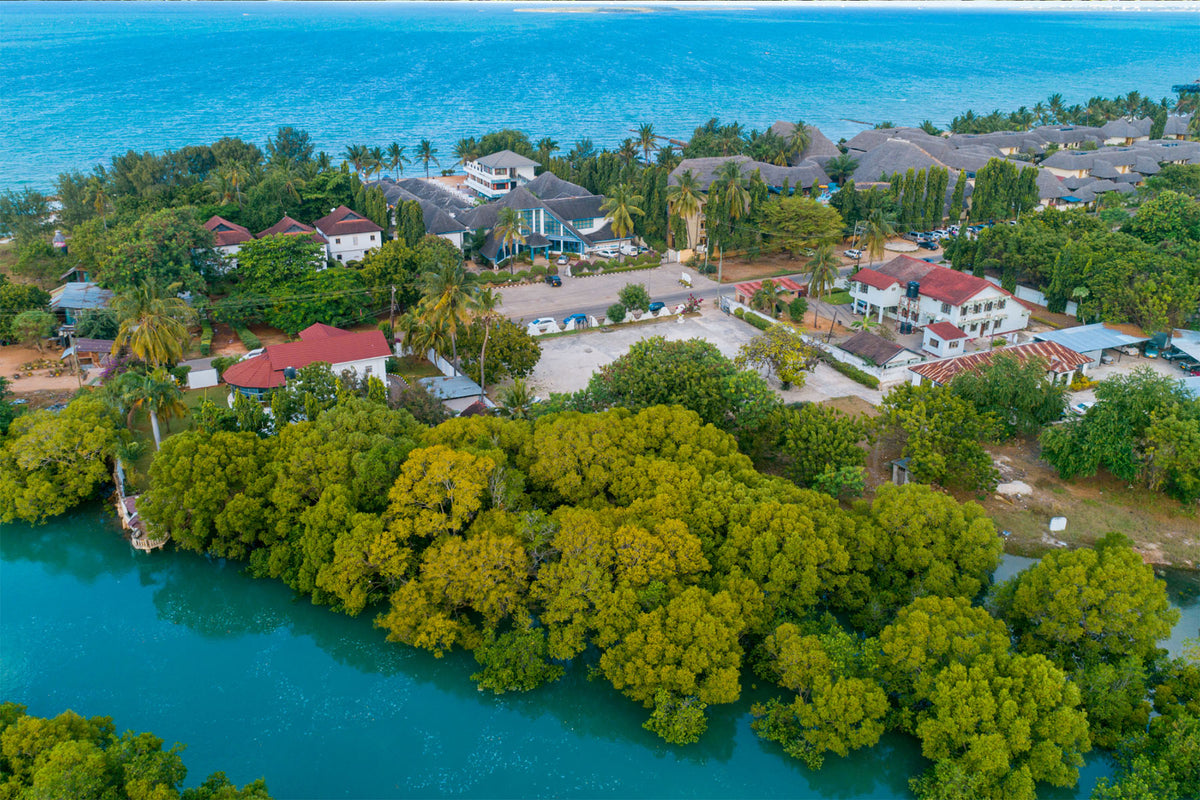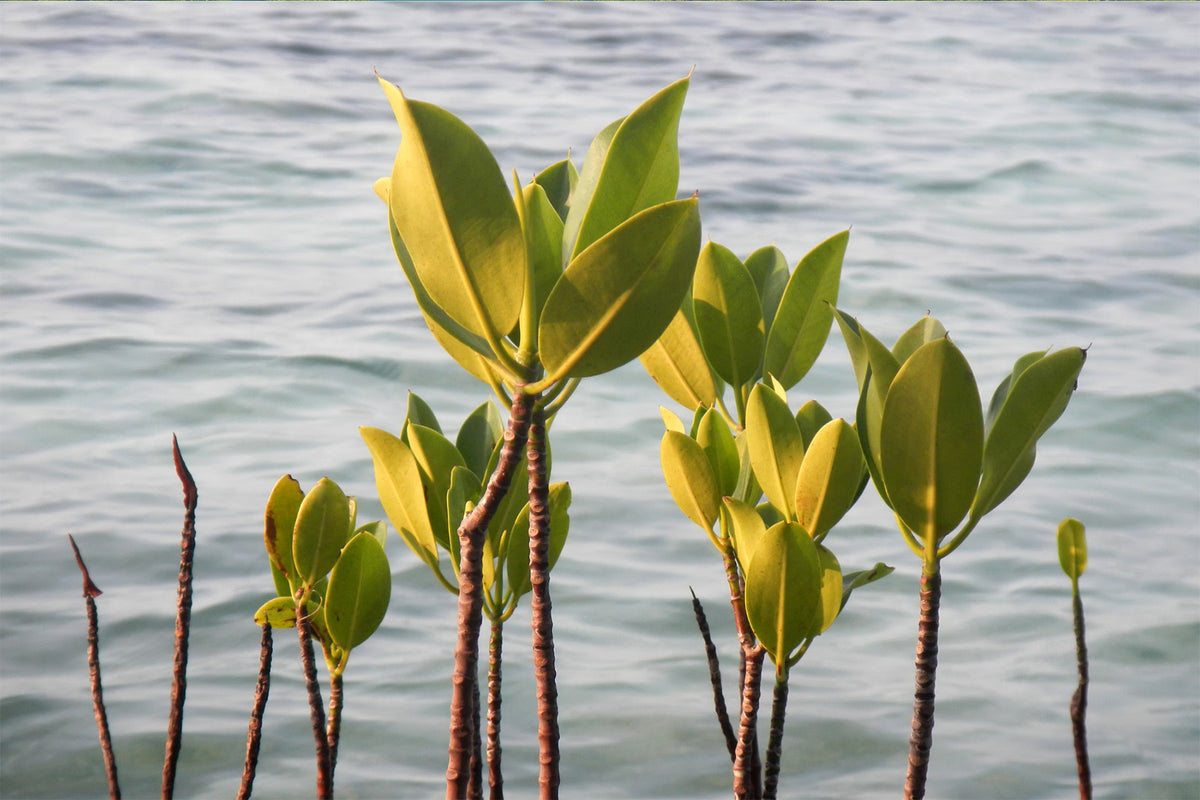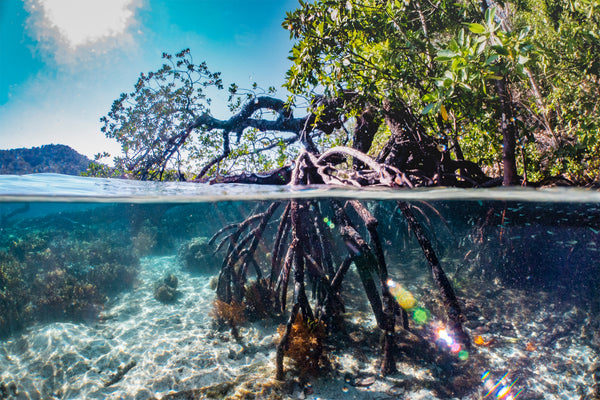If you’ve ever been on vacation by the beach somewhere tropical, you’ve probably encountered mangrove trees and noticed their incredible ability to grow, seemingly, with their roots underwater. In fact, the mangrove is a tree family unlike any other — and they’re crucial for helping the environment and protecting the world’s coastlines.
Mangroves are salt-tolerant trees (halophytes) and can be found in what’s known as the intertidal zone – the area where the coastlines meet land in tropical and subtropical locations.
What’s remarkable about them is that despite being trees, they’re able to thrive in salty water, among the shifting sands of the world’s oceans, and rooted in the low-oxygen environment of mud. Their twisted roots and branches jut up from the sand and water like long, slender stilts and help to secure them against the battering of the sea and changing tide — and their thick, waxy leaves filter and excrete the salt from the water.
Aside from their incredible adaptation to an environment that’s considered unfit for trees of any kind, mangrove forests are critical for protecting coastlines, endangered and threatened species, people’s livelihoods, and even helping combat climate change!
Watch Mangroves: Explained to learn more about these incredible trees!
Read On To Learn More Fun Facts About Mangrove Trees!

1. Many species of mangrove survive by filtering up to 90% of the salt out of seawater as it enters their roots
As mentioned, most trees can’t live in saltwater, but mangroves have adapted to live in high-salinity environments along coasts around the world. In addition to filtering salt out of sea water, their unique root systems help them stay upright in soft, waterlogged soils and give them access to oxygen and nutrients.

2. Mangrove forestS protect an estimated 341 threatened species around the world (and not just fish and shellfish!)
Thanks to their intricate root systems, they provide nesting, nursery and feeding grounds for many aquatic organisms, including juvenile fish of thousands of species, oysters and mussels, mudskippers, lemon sharks, and manatees. Above the ocean surface, mangroves also provide critical habitat for cranes, eagles, monkeys, and even tigers!

3. Mangroves act as natural barriers against rising tides and storm surges
Two undeniable symptoms of climate change are rising sea levels and increasingly extreme storm surges — and mangroves are a natural solution to protect against the devastation caused by both. A wave passing within 100 meters of a mangrove forest can lose around 2/3 of its energy. Experts estimate that mangrove ecosystems prevent more than $65 billion in property damages, and reduce flood risks for around 15 million people every year.

4. Mangrove forests cover just 0.1% of the planet’s surface but store up to 10x more carbon per hectare than terrestrial forests
That’s right: they play a critical role in protecting the planet from climate change. How? Mangrove trees store carbon in their leaves, and when those leaves fall off and sink into the mud and silt, they become what is known as blue carbon (carbon that is stored underwater.)

5. Some mangroves filter salt water through pores on their leaves
In addition to their roots, some mangrove species also have special leaves that help them thrive in salty or brackish water. Still other mangrove species store salt in older leaves or bark. When the leaves drop and the bark sheds, the stored salt is shedded with them.

6. Over 100 tropical and subtropical countries have mangroves along their coastlines
Mangrove forests are more ubiquitous than you might think. Over 100 tropical and subtropical countries are lucky enough to have mangroves along their coastlines. One Tree Planted actively supports mangrove restoration projects throughout Asia and Latin America, including Costa Rica, The Philippines, India, Haiti and Guatemala.
